
Welcome back to my two-part beginner's guide to growing fruit trees. Last month we looked at how to choose the right fruit for you, and also had a look at pollination groups. This month we delve a little deeper into the knowledge you need to choose your new trees by looking at rootstocks and then a quick overview of the shapes and sizes of trees you can buy.
Almost no top fruit will come true from seed. Plant five pips from your supermarket ‘Braeburn’ apple and you will produce five new, genetically unique trees. Depending on the pollen that pollinated that particular tree, you may end with one or two quite similar, but you may also produce a crab apple, or a tree prone to pest and disease.
It’s a biological lottery, but what is certain is that they will not be ‘Braeburn’.
This goes a long way to explaining why there are around 6000 named varieties of apple known in the UK. Luckily, the Romans – in between building straight roads and aqueducts – worked out that you could physically attach either a bud or a piece of new growth from the tree you wanted to reproduce to a rootstock, and you would end up with an identical clone.
Originally, they would have used seedling trees for the rootstocks, but there has been a lot of breeding done in the past 100 years which has produced a range of stocks that can control growth and improve disease resistance.
Selecting the right one for the size and shape of tree you want is crucial to long-term success.
POINTS TO CONSIDER
Before I list the various rootstocks commonly used, there are three general points that it is worth bearing in mind:
Bu hikaye Kitchen Garden dergisinin February 2021 sayısından alınmıştır.
Start your 7-day Magzter GOLD free trial to access thousands of curated premium stories, and 9,000+ magazines and newspapers.
Already a subscriber ? Giriş Yap
Bu hikaye Kitchen Garden dergisinin February 2021 sayısından alınmıştır.
Start your 7-day Magzter GOLD free trial to access thousands of curated premium stories, and 9,000+ magazines and newspapers.
Already a subscriber? Giriş Yap
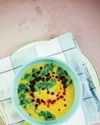
SEPTEMBER SPECIALS
This month, with sweetcorn, figs and blackberries on the menu, Anna Cairns Pettigrew is not only serving up something sweet and something savoury, but all things scrumptious
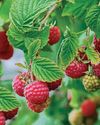
FLAVOURSOME FRUIT AUTUMN RASPBERRIES
September - is it late summer or the start of autumn? David Patch ponders the question and says whatever the season, it's time to harvest autumn raspberries
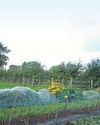
SOW GREEN THIS AUTUMN
Covering the soil with a green manure in winter offers many benefits and this is a good time to sow hardy types, says KG editor Steve Ott

A HISTORICAL HAVEN OF FRUIT AND FLOWERS
KG's Martin Fish takes time out from his own plot to visit a walled garden in Lincolnshire which has been home to the same family for more than 400 years
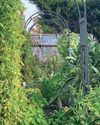
RESTORING THE BALANCE
The phrase regenerative gardening is often heard in gardening circles, but what is it? Can it help you to grow better veg? Ecologist Becky Searle thinks so, and tells us why
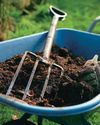
WASTE NOT, WANT NOT
Garden Organic's Anton Rosenfeld shares his expertise on using compost made from green bin collections with handy tips on getting the right consistency and quality
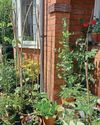
Celebrating Organic September!
In this special section we bring you four great features aimed at improving your crops and allowing nature to thrive
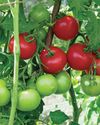
SEEING RED
Do your tomatoes have a habit of remaining stubbornly green? Or perhaps you're lucky to enjoy lots of lovely fruits - just all at once. Either way, Benedict Vanheems is here with some top tips to ripen and process the nation's favourite summer staple
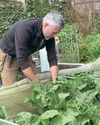
NEW KIDS ON THE BROCCOLI!
Rob Smith is talking broccoli this month with a review of the different types available and suggestions for some exciting new varieties to try
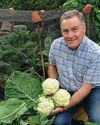
A NEW kitchen garden
Martin Fish is getting down to plenty of picking and planting on the garden veg plot, while Jill is rustling up something pepper-licking good!